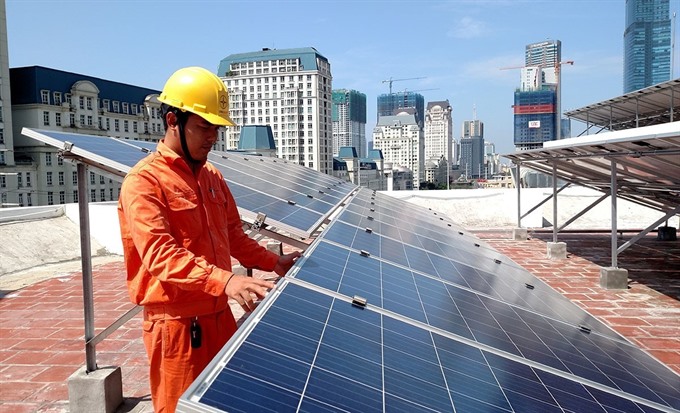Renewables could become Vietnam’s lowest-cost option to meet its energy needs, according to a whitepaper released by global management consulting firm McKinsey & Company on Wednesday.

Renewables could become Viet Nam’s lowest-cost option to meet its energy needs, according to a whitepaper released by global management consulting firm McKinsey & Company on Wednesday.
‘Exploring an alternative pathway for Viet Nam’s energy future’ evaluates how Viet Nam could meet its growing energy demand at the lowest cost, with the least impact on public budgets and the least risk.
“As one of the 18 outperforming emerging economies we identified globally, Viet Nam needs more capacity to meet the rapidly growing energy demand it requires for sustainable growth. The path Viet Nam chooses to build this capacity will have far-reaching implications on GDP growth potential, trade, environmental performance and energy security,” said Marco Breu, managing partner, Viet Nam, McKinsey & Company.
The research found Viet Nam’s significant natural endowments of solar and wind power combined with a drop in the capital costs of solar and wind over the past five years – 75 per cent decrease in solar costs and 30 per cent decrease in the costs of wind – strongly positions renewables to be a more affordable source of electricity than thermal generation.
Viet Nam’s current power plan requires an investment of roughly US$150 billion by 2030 in additional generation assets and grid infrastructure. The power-generation investments focus largely on coal (about 45 additional gigawatts by 2030) and to a lesser extent renewables (18 gigawatts by 2030).
The research suggests that a renewables-led pathway could help Viet Nam’s power sector perform better than the current trajectory because overall power costs between 2017 and 2030 would be reduced by 10 per cent, primarily driven by savings in fuel costs resulting from a move away from high levels of fuel-intensive thermal generation.
Greenhouse gas and particulate emissions would be reduced by 32 per cent and 33 per cent respectively between 2017 and 2030. This would also boost health and economic productivity.
In addition, the renewables-led pathway relies on 28 per cent less total fuel and 60 per cent fewer imports. This would reduce Viet Nam’s reliance on fuel imports and fossil fuels.
“There is no silver bullet that will solve Viet Nam’s energy challenges. The ability to meet rapidly growing demand while keeping costs low will depend on the creation of financial and regulatory infrastructure that make the market attractive to capable renewables developers,” said Antonio Castellano, partner and co-lead, electricity and natural gas practice, Southeast Asia, McKinsey & Company.
The whitepaper also discusses the keys that could unlock a renewables-led pathway. These include creating suitable market conditions for renewables development, building the country’s capabilities to deliver large scale renewables projects and expanding natural-gas generation’s role in the country’s power plan.
“This is a watershed moment for Viet Nam. Renewables are potentially the lowest-cost option for Viet Nam to meet its energy needs. Actions taken today to help lay the groundwork for renewables development would offer the country the prospect of a less expensive, cleaner and more secure future,” he added. — VNS





